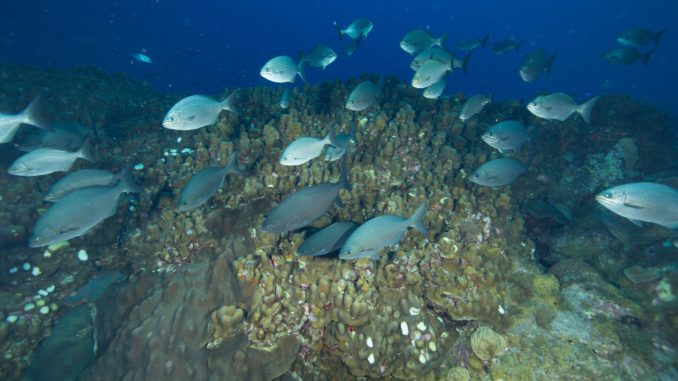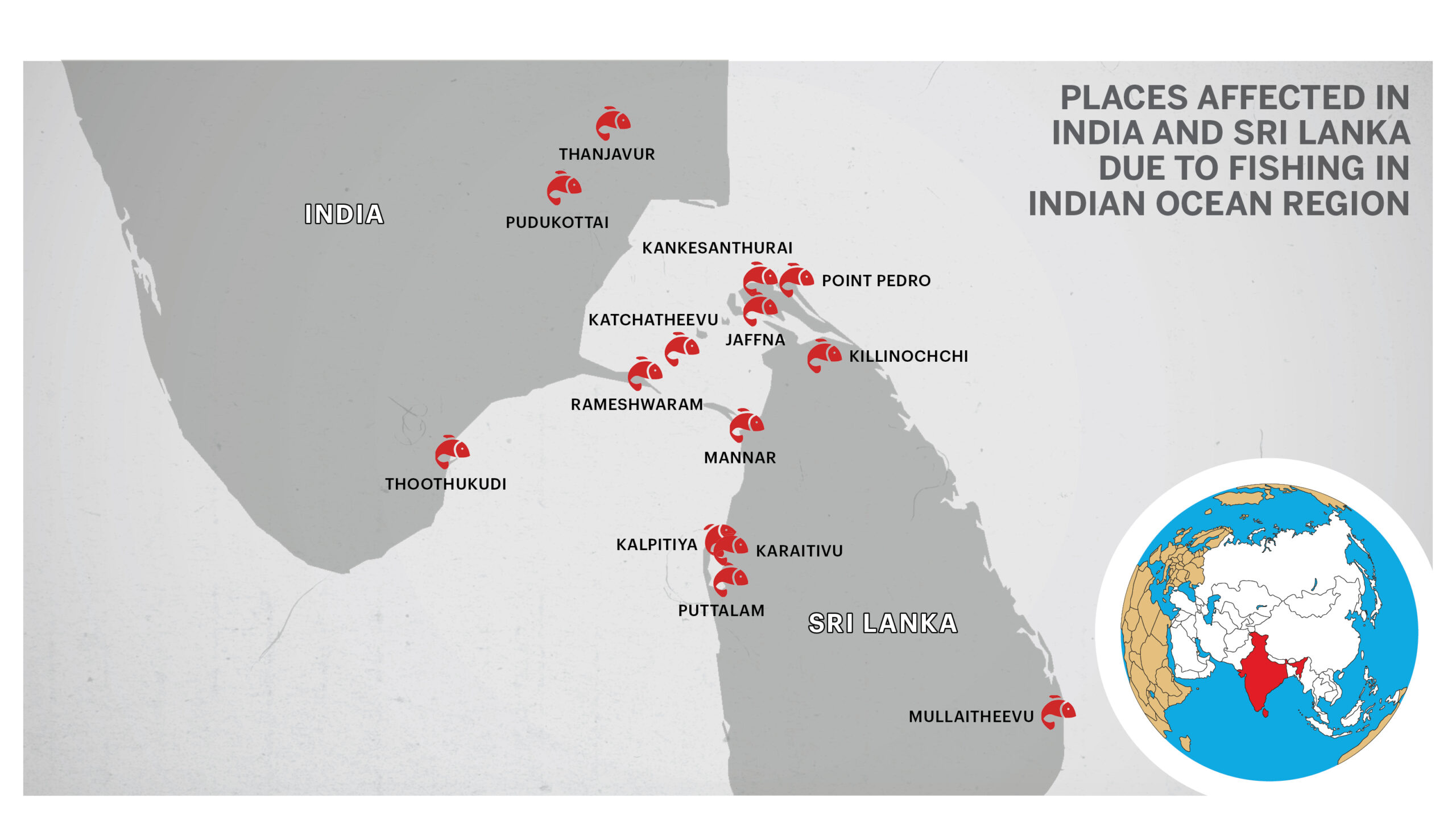
Colombo — In the latest incident involving Indian fishermen encroaching on Sri Lankan waters, a group of fishermen claimed they were attacked by the Sri Lankan Navy, with stones hurled at them, late last month.
The fishermen, who were bottom trawling in the Indian Ocean, were reportedly trespassing in Sri Lanka’s territorial waters. In addition to illegally fishing in the Palk Bay region, the fishermen’s method — bottom trawling — is banned in Sri Lanka.
Bottom Trawling is a destructive technique that uses nets dragged across the sea floor to catch fish. As iron chains attached to the nets are dragged along, they can cause extensive damage to the surrounding ecosystems, including fragile coral reefs.
“The fishermen in the northern part of Sri Lanka are completely against the illegal entry of Indian fishermen for fishing activities,” said Kalyani Hewapathirana, director of operations in the Department of Fisheries.
“The Indian government has banned the technique of trawling for two days a week. On the day the fishermen are allowed to trawl, they trespass into the Sri Lankan sea. This is illegal as they are exploiting resources on our exclusive zone,” said Hewapathirana.
The number of registered trawlers in India’s southern districts of Thanjavur, Pudukkottai and Rameswaram has increased since 2000. By 2012, the country is reported to have achieved a staggering 5,400 percent increase in the export of marine products.
Palk Bay is a rich fishing area for both countries that has been contested for years. As of 2015, more than 1,300 Indian fishermen had been arrested by the Sri Lankan Navy.

Regarding the late October incident, Sri Lanka’s Minister of Fisheries and Aquaculture Douglas Devananda said, “The Sri Lankan Navy attacked the Tamil Nadu fisherman with stones and glass bottles. I was pleased to hear about this. If you do not bring this issue under control, there will be clashes at sea.” Devananda made his remarks during a meeting with fishermen in Kilinochchi, a northern town in the country.
Rameswaram and Tamil Nadu fishermen strongly condemned Devananda’s remarks.
The roots of the conflict can be traced to the 1974 Indo-Lanka Maritime Agreement, which gave Sri Lanka access to Katchatheevu — a 285-acre uninhabited island in the Palk Bay — and to the 1976 International Maritime Boundary Line (IMBL), which demarcated the Gulf of Mannar and Bay of Bengal.
While the agreements created an international boundary and made it illegal for fishermen from both countries to trespass into each other’s waters for fishing, it did not specify fishing rights. This allowed the Indian fishermen to use the island for fishing.
Indian fishermen were able to fish in the region without much trouble until the early 2000s because the Sri Lankan Navy had restricted Sri Lankan fishermen from venturing into the sea during the country’s long civil war against the Tamil rebels.
After the civil war ended in 2009, however, the dispute resurfaced as Sri Lankan fishermen were allowed to resume fishing. Since then, there have been numerous clashes and conflicts between fishermen from both sides.
Tensions have heightened over the past few years as both Sri Lanka and India are in a race to increase maritime exports and expand their share of global maritime trade.
India, for its part, has drafted a Blue Economy Vision 2025, which aims to achieve sustainable development of maritime assets and resources. The policy is meant to benefit 14 coastal states and other villages dependent on fisheries-related activities, which contribute some INR 1.3 trillion (about $20 trillion) to India’s GDP.
Sri Lanka has a National Fisheries Policy “to provide for the management, regulation, conservation and development of fisheries and aquatic resources.” The fisheries sector as of the mid-2000s, accounted for around 1.2 percent of the country’s GDP.
In Sri Lanka, about 2 million people depend on fishing for sustenance. The Ministry of Fisheries and Aquaculture had created aquatic farms in the northern provinces to cultivate shrimp in an attempt to increase their contribution to the country’s GDP. Some of the farms were abandoned after excessive bottom trawling, and the area is no longer suitable for any activity due to the high salinity of the soil.
Sri Lanka also created an Exclusive Economic Zone, which allows only Sri Lankan fishermen to fish and conduct deep-sea exploration. The fisheries sector, which directly or indirectly employs over 6.5 million people, reports that for every 40 pounds of catch, only two pounds are suitable for use.
“The Indian fishermen come to Lankan waters because the population of fish has reduced drastically in their waters due to bottom trawling,” said Annalingam Annarasa, president of the Kyats Fisheries Cooperatives Federation.
“The Indian fishermen come in high-powered steamboats in fleets of hundreds into the Sri Lankan waters in a formation. The fleet collectively trawls in the Lankan coastal regions,” said Indika De Silva, spokesperson for the Sri Lankan Navy.
De Silva said such illegal entry is usually accompanied by smuggling and the boats flee when they spot patrol boats.
“If there are few boats in the fleet, they will turn back to the Indian waters once they catch sight of the patrol ship. If the fleet is huge, they don’t budge.”
Hewapathirana said fishermen have made several pleas to the government to issue trawlers’ license, but the ministry has not yet made a decision.
He said the country’s National Aquatic Resources Research and Development Agency is conducting research to identify fishing grounds suitable for trawling as existing area have been rendered useless by Indian fishermen.
(Edited by Siddharthya Roy and Judy Isacoff)
The post Indian Fishermen Attacked in Latest Incident of Trespassing in Sri Lankan Waters appeared first on Zenger News.
